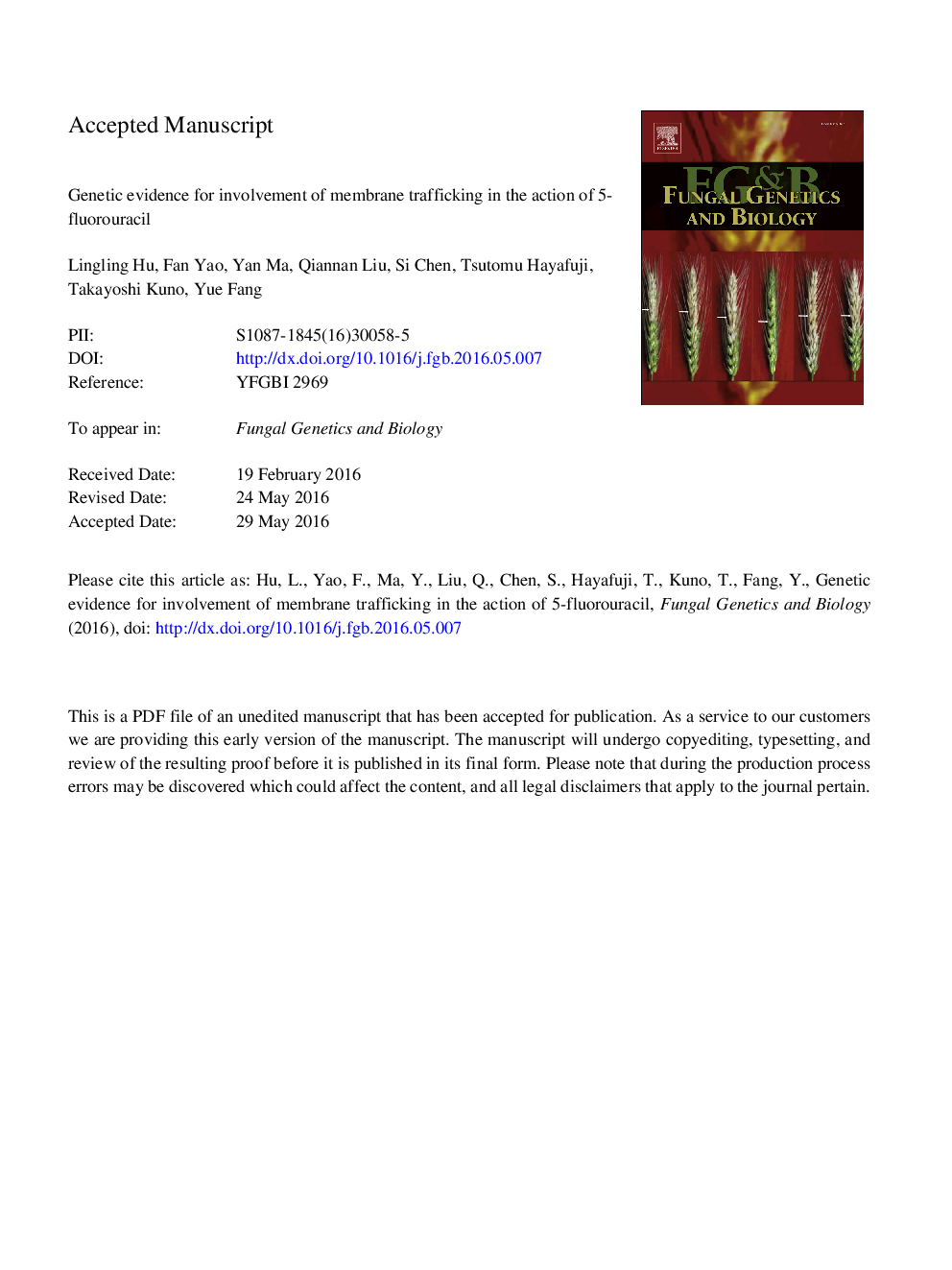| Article ID | Journal | Published Year | Pages | File Type |
|---|---|---|---|---|
| 8470508 | Fungal Genetics and Biology | 2016 | 27 Pages |
Abstract
To identify novel genes that mediate cellular sensitivity and resistance to 5-fluorouracil (5-FU), we performed a genome-wide genetic screening to identify altered susceptibility to 5-FU by Schizosaccharomyces pombe haploid nonessential gene deletion library containing 3004 deletion mutants. We identified 50 hypersensitive and 12 resistant mutants to this drug. Mutants sensitive or resistant to 5-FU were classified into various categories based on their putative functions. The largest group of the genes whose disruption renders cells altered susceptibility to 5-FU is involved in nucleic acid metabolism, but to our surprise, the second largest group is involved in membrane trafficking. In addition, several other membrane traffic mutants examined including gdi1-i11, ypt3-i5, Îryh1, Îric1, and Îaps1 exhibited hypersensitivity to 5-FU. Furthermore, we found that 5-FU in low concentration that generally do not affect cell growth altered the localization of Syb1, a secretory vesicle SNARE synaptobrevin which is cycled between the plasma membrane and the endocytic pathway. Notably, 5-FU at such low concentration also significantly inhibited the secretion of acid phosphatase. Altogether, our findings revealed the first evidence that 5-FU influences membrane trafficking as the potential underlying mechanism of the drug action.
Keywords
Related Topics
Life Sciences
Biochemistry, Genetics and Molecular Biology
Cell Biology
Authors
Lingling Hu, Fan Yao, Yan Ma, Qiannan Liu, Si Chen, Tsutomu Hayafuji, Takayoshi Kuno, Yue Fang,
